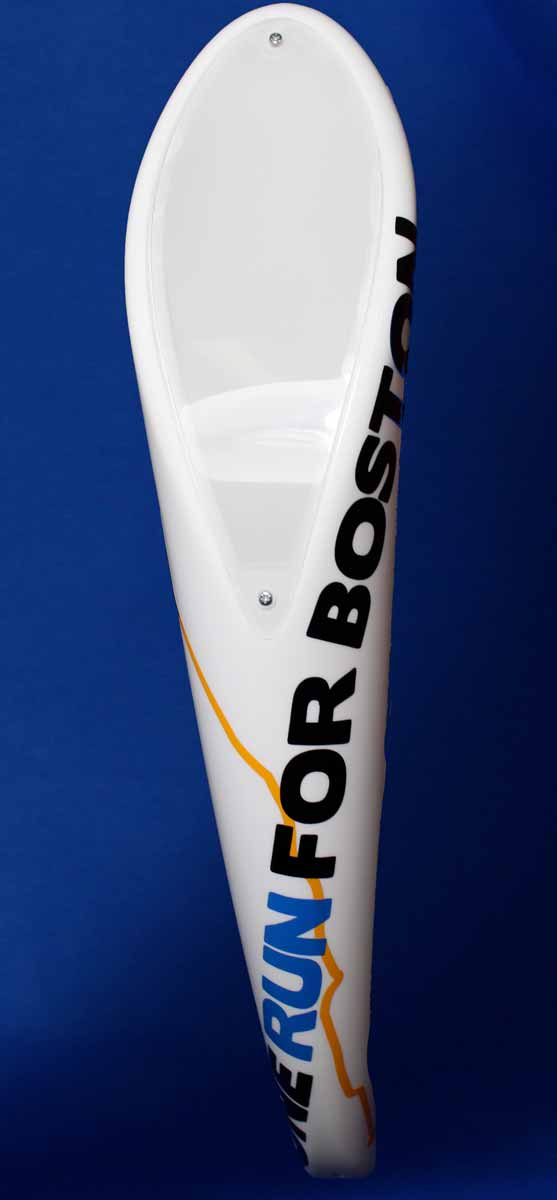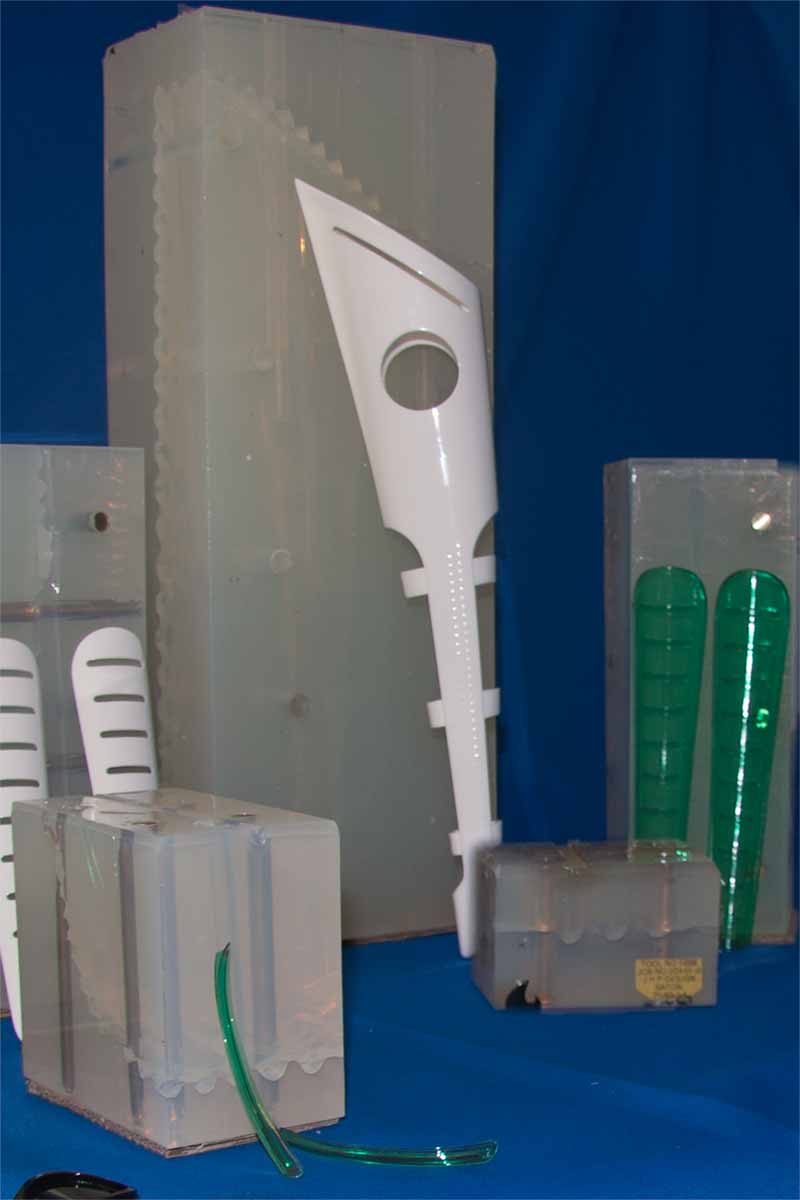Boston Baton
Malcolm Nicholls Limited (MNL) utilised our 3D Printing technologies and low-volume manufacturing to produce 3 series of batons for the One Run for Boston
Boston Baton Trophy
Three 3D printed series of batons for huge fundraising races across the USA
Malcolm Nicholls Limited (MNL) a well-established 3D Printing and prototype model-making company, who have been producing high-quality prototypes for over 50 years, were delighted to lend its services free of charge to such a worthy cause. MNL were approached due to their reputation for the quality of product and service. In 2014 MNL produced the first series of Baton, and over the last few years, MNL has produced 3 series of batons for the relay races across America.
1st Series of the baton (One run for Boston)
Like most of the world, three friends in England were horrified to watch coverage of the Boston Marathon bombing on April 15. The three runners wanted to do something positive so they organized a California to Massachusetts relay race to raise money for bombing victims. The majority of funds raised will benefit One Fund Boston, whose organizers live in England but weren’t deterred by distance.
The relay, which started June 7th in the L.A. area, ends June 30th in Boston.
“When something like this happens, it doesn’t matter where you’re living — it just packs a hard punch,” says Kate Treleaven, 34, of Devon County, England.
Despite the distance, marathoner Treleaven and fellow runners Danny Bent and James Hay were determined to bring something positive to the sorrow. The result: One Run for Boston, a relay race across the United States that has attracted more than 1,000 runners and raised, so far, almost $50,000.
The money goes to One Fund Boston, the charity that helps those most adversely affected by the bombing. Three people died and more than 260 were injured.
“We thought, ‘How could something so awful happen to a group of people who were doing something so wonderful?’ “, Treleaven said. “It was a need to purge that hideousness and basically bring things back to a happier equilibrium.”
The trio settled on dates and mapped out a route using Google Maps and MapMyRun, an app for runners. A friend in art school created an Olympic-style torch with a GPS tracking device so the public could follow the relay on the OneRunforBoston.org website.
The concept baton was originally produced using 3D printing on a Stereolithography (SL) machine by Malcolm Nicholls Limited (MNL), also based in the UK. MNL is one of the longest-established service providers of 3D printing parts and components and has been using the technologies for the best part of 20 years. MNL has donated its time and expertise to this worthy cause.
3D Printed Baton Trophy Case Study


2nd Series of the baton – (One run for Boston)
Urged by the success of the first relay the fundraising organisers staged another relay race to raise yet more funds. The 3328-mile relay across the USA is a 300+ stage relay run where sponsored runners carry the Boston Baton from LA on the west coast to Boston on the East coast of America. This year the month-long relay was timed to finish one week before the start of the Boston Marathon which would mark the 1st anniversary of the horrific event.
So far the total raised for the bombing victims is in excess of 450,000 dollars
3rd Series of baton – (United Relay of America)
United Relay of America is the first-ever triple coast-to-coast charity relay setting off from Seattle, San Francisco and Los Angeles and meeting in New York City! Three routes from the West to the East coast of America, hundreds of runners and cyclists and one aim: inspire, empower and connect people across America – to not just be part of relay history, but to be united for a better world! One of the beneficiary charities was, The We Are Here Movement, founded by Alicia Keys. Funds donated to the We Are Here Movement are split equally among the We Are Here charity partners so your fundraising efforts help a wider range of causes than ever before!
The design of the baton originally emulates a Lily a symbol of peace.
The Making Of The Batons.
For each design of the baton, the initial stage was to 3D print via Stereolithography on one of their (SLA5000) machines at MNL. The batons consisted of an assembly of a variety of components using different materials. Once the 3D prints were built, they were given to MNL’s highly skilled finishing department. The finishing department starts with the removal of visible layers and then will work with the surface of the model up to the point of the required level of finish such as a perfect high gloss. The finished baton “masters” were to be used as patterns for MNL’s soft tooling process; Silicone tooling. From these tools a series of castings were produced, predominately in an ABS durable material in gloss, some were translucent white and some clear and tinted. The 3rd series of baton also consisted of elastomers giving a tactile grip. To give the baton a completed look graphics were applied to depict the route, logos, etc.
All of the batons also needed to be illuminated for nighttime running, and GPS trackers were fitted internally so, at any point of the run, the sponsors could monitor their location from the website.
For the internal components, unfinished 3D printed Selective Laser Sintered (SLS) parts were produced. Multiple batons were produced from silicone tooling for each stage of each race.
MNL has proudly donated their time and expertise to these causes free of charge
The variety of colours, materials and textures and quality of finish in the Batons is a great showcase for the capabilities of the fantastic team at MNL.


Image demonstrating the production of the 3D Printed trophy batons utilising our silicone moulding expertise to produce a series of castings.
Looking to Produce Multiple Parts?
We can produce anything from one to thousands
